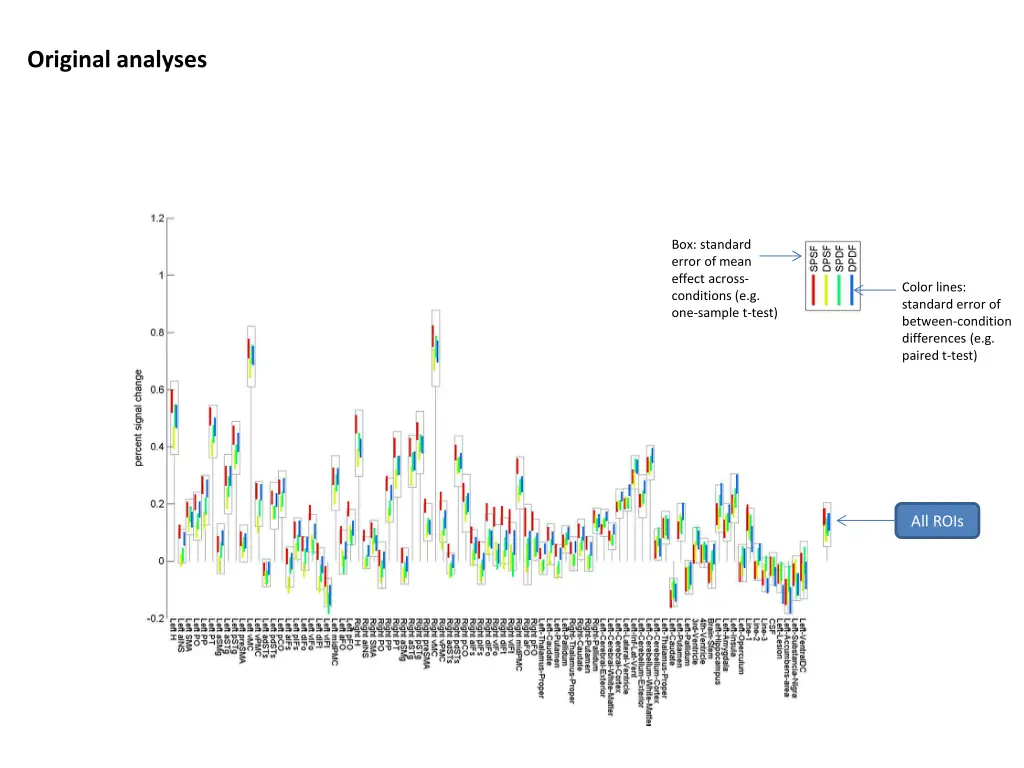
Temporal Response in Experimental Analysis
Explore an analysis focusing on temporal response within experimental blocks, using standardized error measurements and model adjustments to enhance data fit. Discover insights into response components and issues arising from repetition in speech production pairs.
Download Presentation

Please find below an Image/Link to download the presentation.
The content on the website is provided AS IS for your information and personal use only. It may not be sold, licensed, or shared on other websites without obtaining consent from the author. If you encounter any issues during the download, it is possible that the publisher has removed the file from their server.
You are allowed to download the files provided on this website for personal or commercial use, subject to the condition that they are used lawfully. All files are the property of their respective owners.
The content on the website is provided AS IS for your information and personal use only. It may not be sold, licensed, or shared on other websites without obtaining consent from the author.
E N D
Presentation Transcript
Original analyses Box: standard error of mean effect across- conditions (e.g. one-sample t-test) Color lines: standard error of between-condition differences (e.g. paired t-test) All ROIs
Time-shift experiment design by ~0.7s (in order to match the centering slice used during the slice-timing correction preprocessing step) Remove first-production event-related regressors (they tend to introduce noise and potential biases due to lack of jitter in combination with block length -15s- being a fixed multiple of TR -2.5s-) Contrast estimation over early within-block response only (first component of the block response see next slide) Modified analyses: Box: standard error of mean effect across- conditions (e.g. one-sample t-test) Color lines: standard error of between-condition differences (e.g. paired t-test) All ROIs
Temporal response within each block Finite impulse response fit 6th order: one response per acquisition, TR=2.5s, length=15s Results shown averaged across all ROIs The observed FIR response does not seem to be well fit by a standard block response (12s block convolved with hrf; best fit shown in black). The standard block response assumes a constant effect within the block, the fit can be improved using a two-component model that allows differential early vs. late effects within the block (shown in red) Two-component response fit Response within block broken in two components (early/late; block=12s, two half blocks of 6s each, convolved with hrf). Both components are entered in the first-level models (separately for each condition). Results shown averaged across all ROIs (previous slide shows first-component-only results for each ROI) Differences in early vs. late components (relative reversal of condition-specific suppression) Issues: Within each 12s block the subject repeats 3 times the same speech production pairs; late component could be modulated by a relative drop in attention, long-range suppression, and/or higher top-down expectation/preparation effects
The strange model delay issue explained? One of the early indications that there was some form of model misspecification was the observation that the first-level model fits improved when artificially adding a delay to the design matrix regressors (e.g. by changing the specified onsets of the conditions). This is shown in the initial model plot below (optimal model shift seemed to be ~5s). That observation seemed to be caused not by any single issue or problem in the model but rather by a combination of different effects, each adding a small contribution to the overall observed delay (which just happened to be all in the same direction). The plots below show how each of the corrections included in the modified model (when added sequentially one at a time) seem to reduce this observed delay (despite most of these corrections being motivated by other issues): 1) Time-shift to match the centering slice used during slice-timing correction (this modification accounts for about 0.7s of the observed ~5s shift) 2) Removal of first-production event-related regressors (this reduces the observed shift by 1-2s, likely due to the associated earlier peak of the hrf-convolved block response, which now starts 2s earlier than in the previous model) 3) Separation of early/late responses (this reduces the observed shift by an additional 1-2s, likely due to the earlier peak of the two-component model fit compared to the full-block regressor model see first plot in previous slide-) Initial model: Model fit After time-shift: After removing event-related regressors: After separating early/late responses: Delay added to the design matrix regressors (s)
Modified analyses (slice-acquisition centering + remove first-repetition regressors)
Original analyses Box: standard error of mean effect across- conditions (e.g. one-sample t-test) Color lines: standard error of between-condition differences (e.g. paired t-test) All ROIs
Experiment design lag matching the slice-timing correction centering slice Remove first-repetition regressors Estimate initial response only (first half of the block response see next slide) Modified analyses Box: standard error of mean effect across- conditions (e.g. one-sample t-test) Color lines: standard error of between-condition differences (e.g. paired t-test) All ROIs
Temporal response within each block Finite impulse response fit 6th order: one response per acquisition, TR=2.5s, block=15s (12s speech + 3s silence) Averaged across all ROIs Two-component response fit Response within block broken in two components (early/late) (block=12s, two half blocks of 6s each, convolved with hrf) Averaged across all ROIs Differences in early vs. late components (relative reversal of condition-specific suppression) Issues: Within each 12s block the subject repeats 3 times the same speech production pairs; late component could be modulated by a relative drop in attention, long-range suppression, and/or higher top-down expectation effects






















